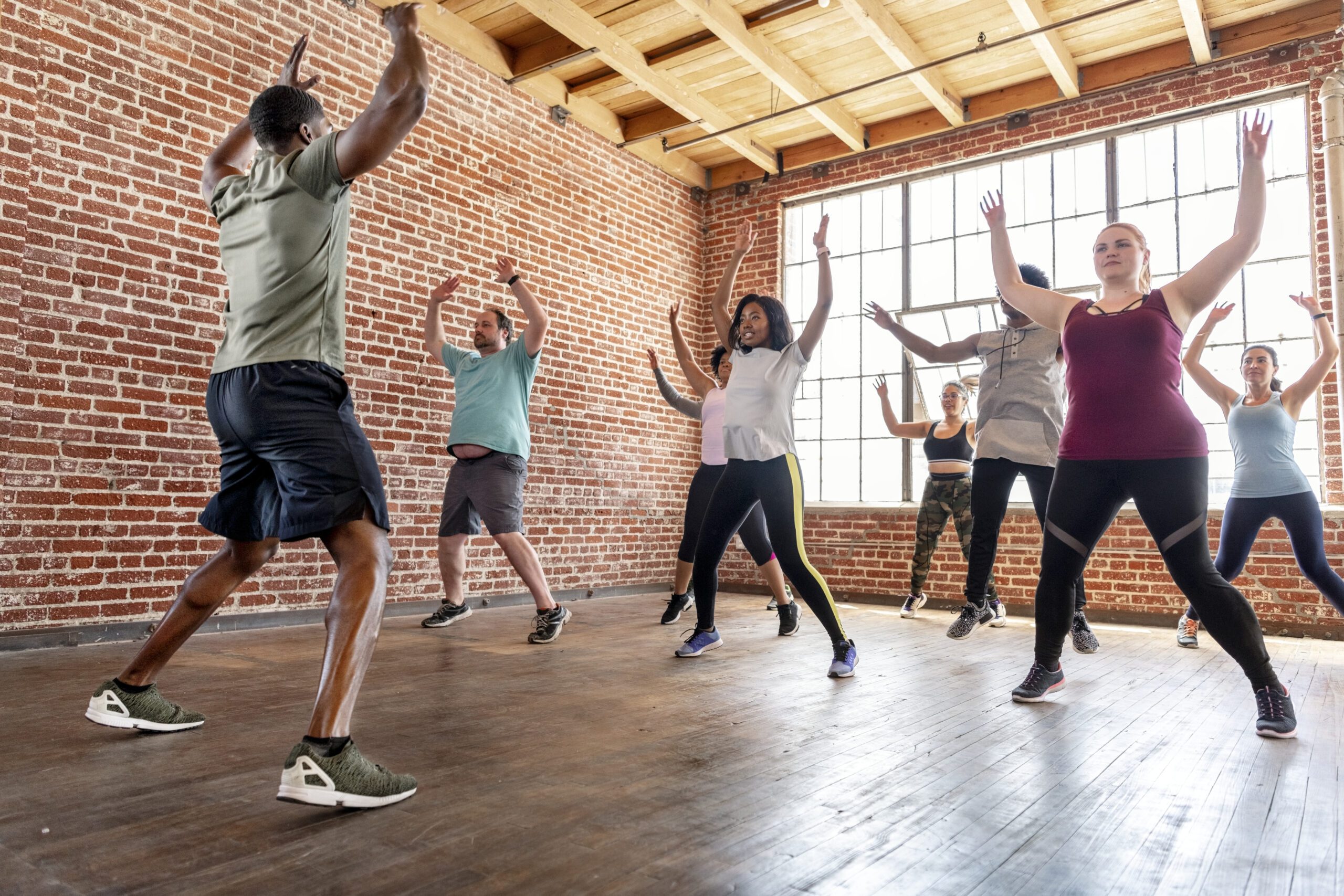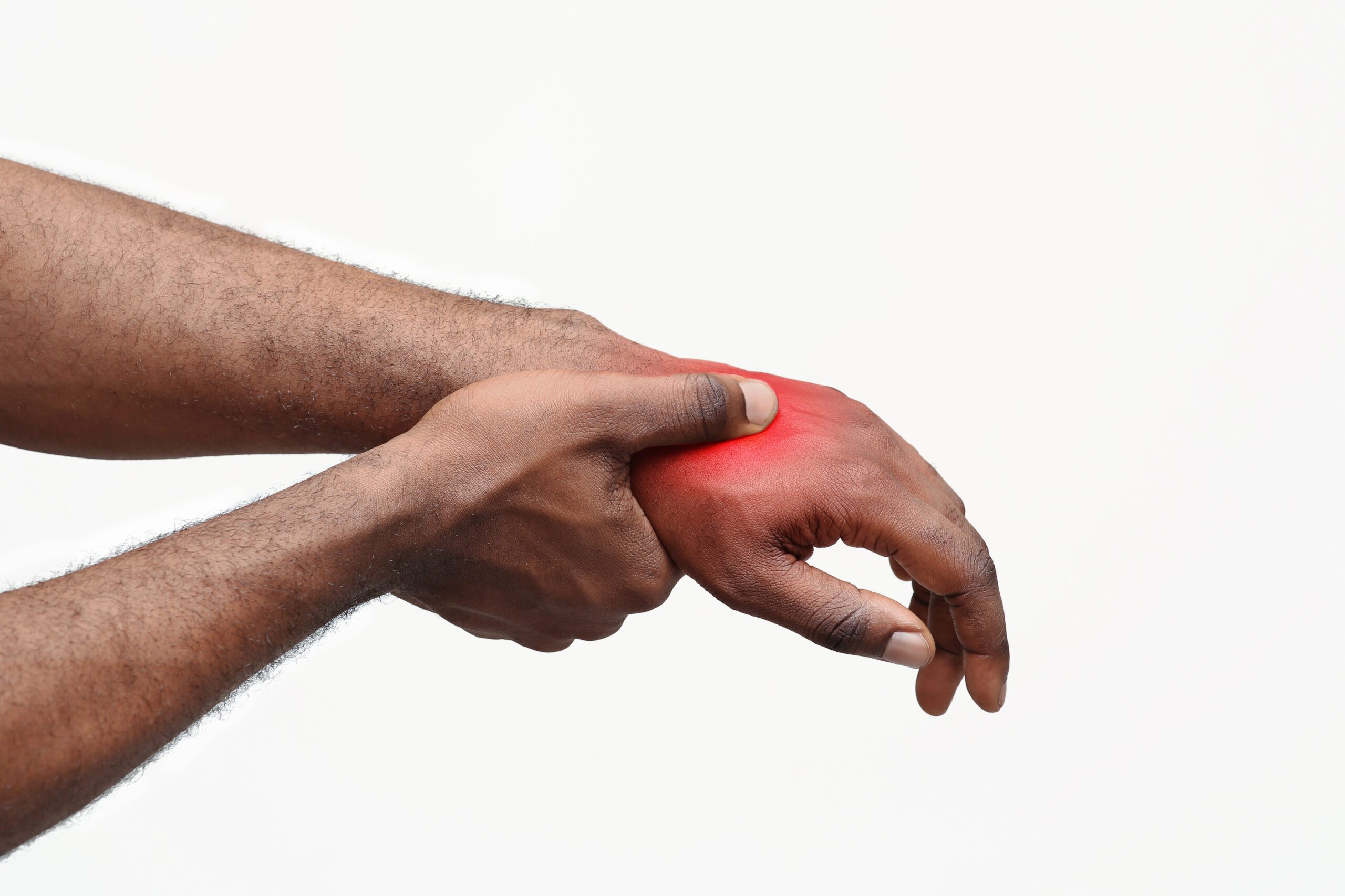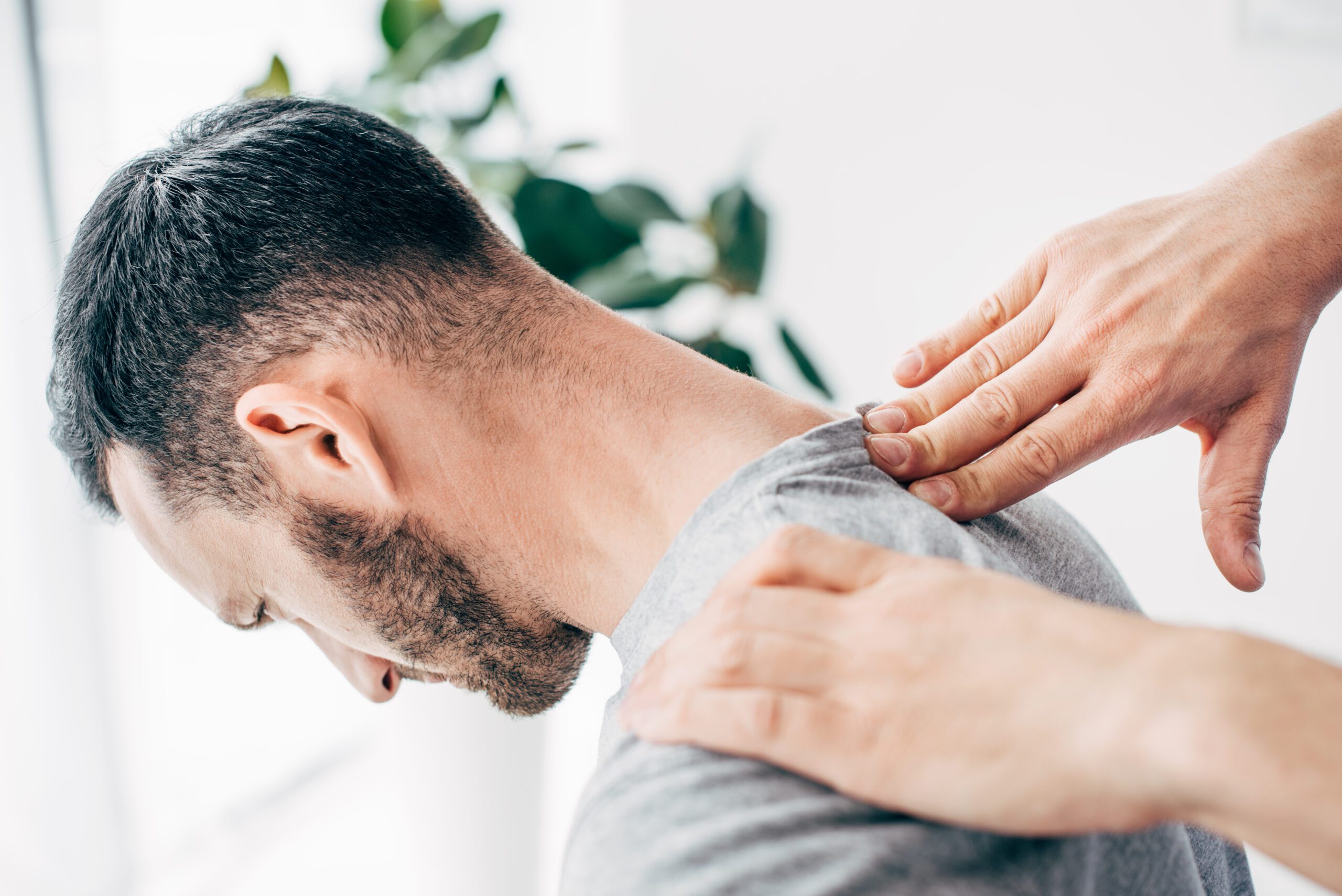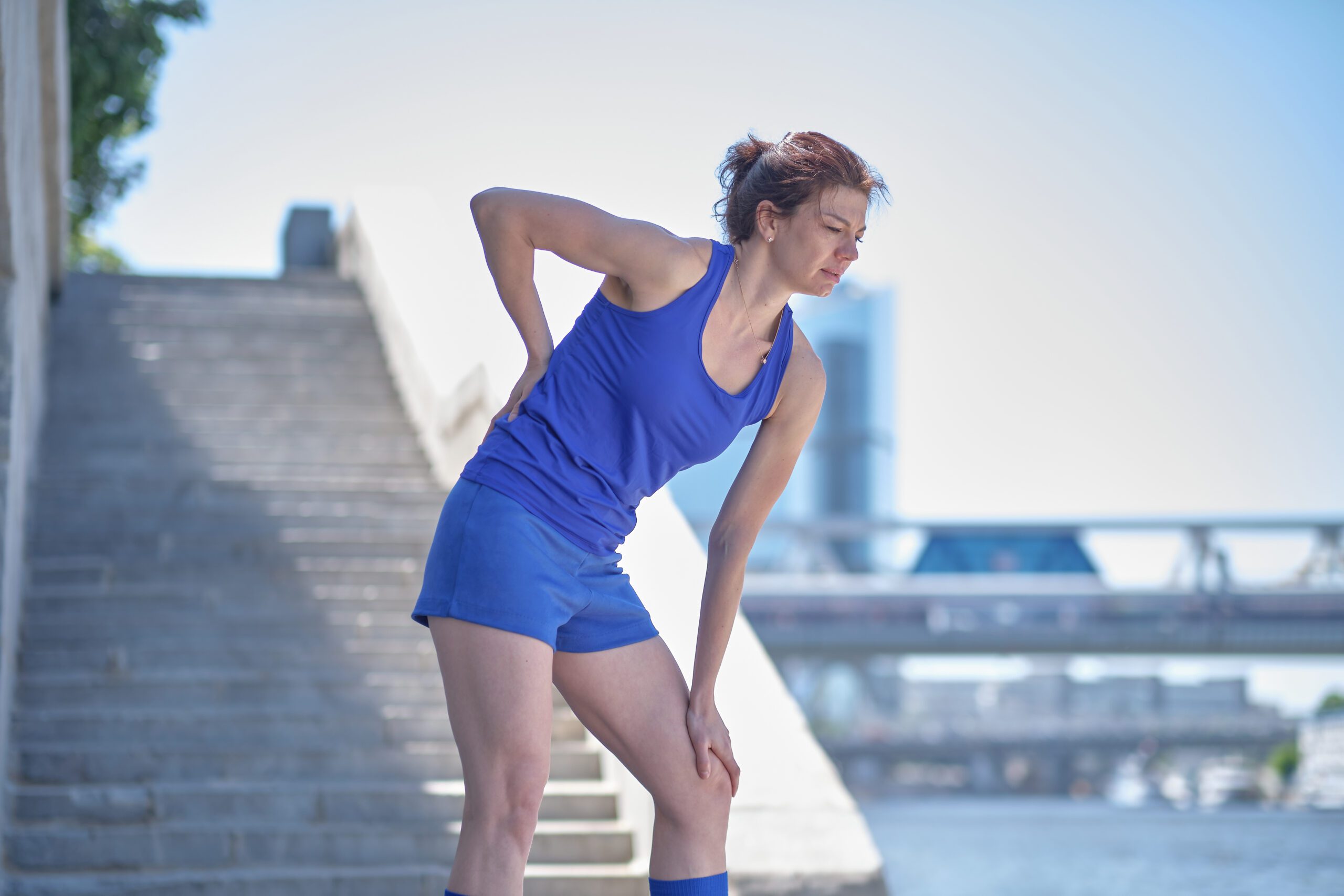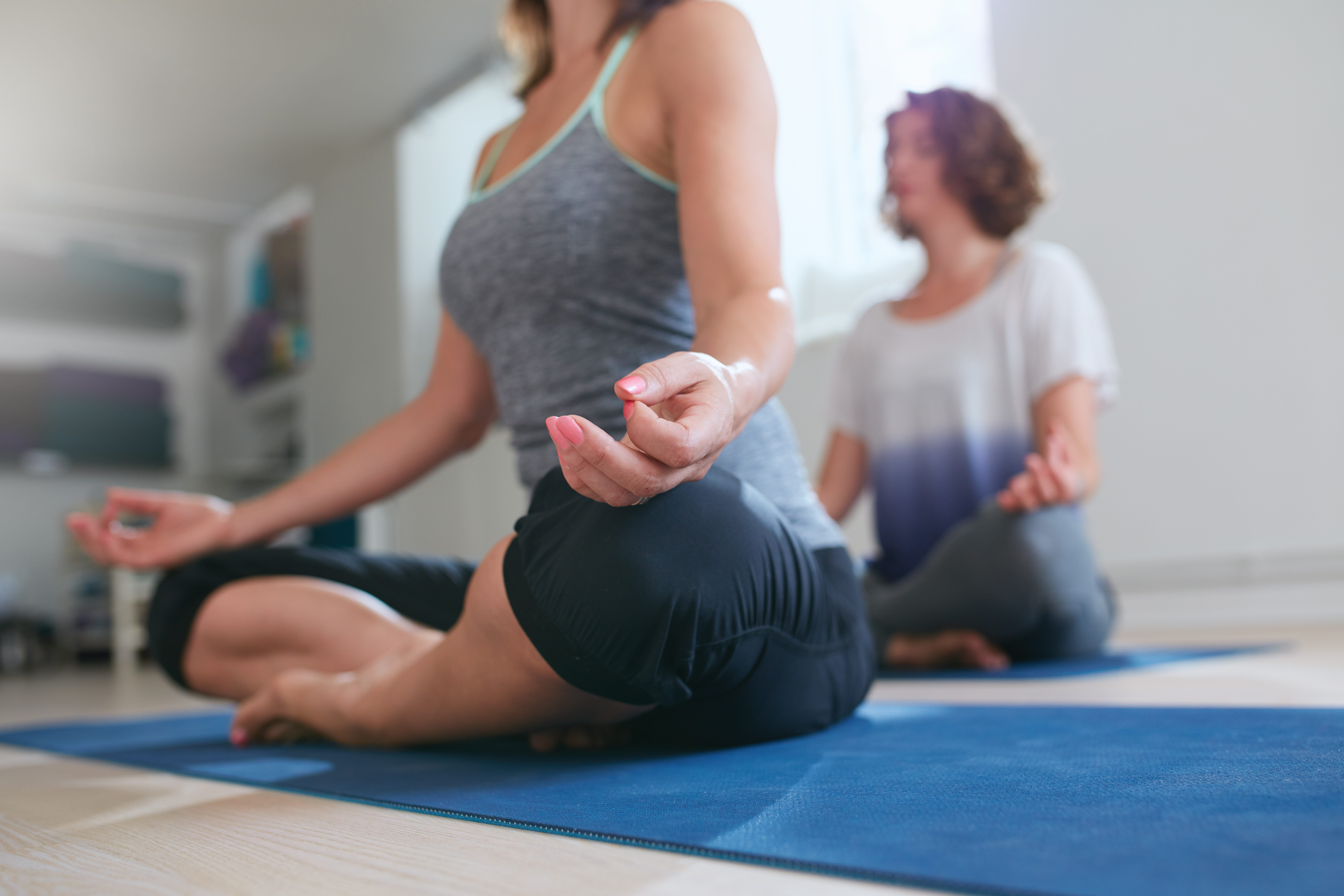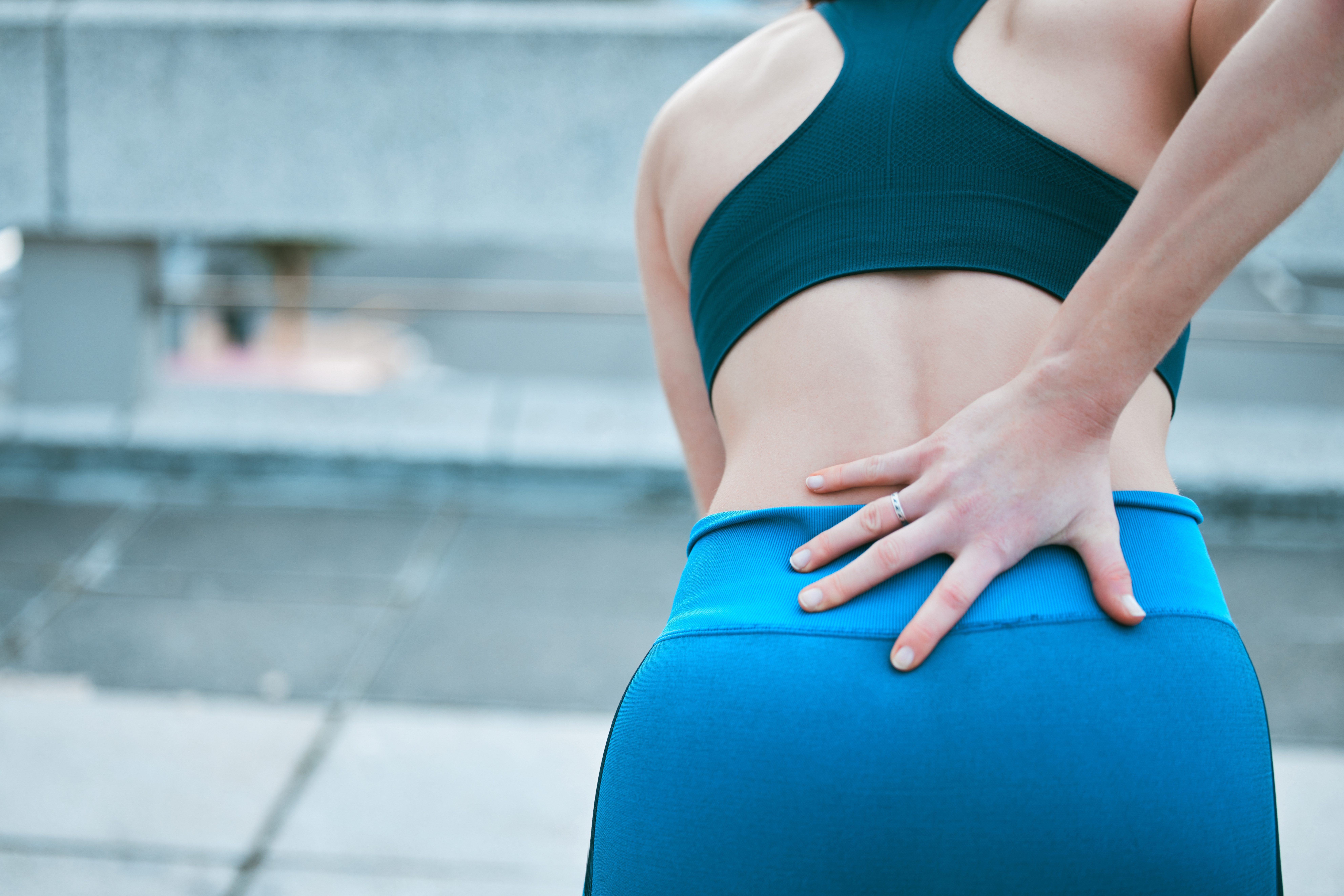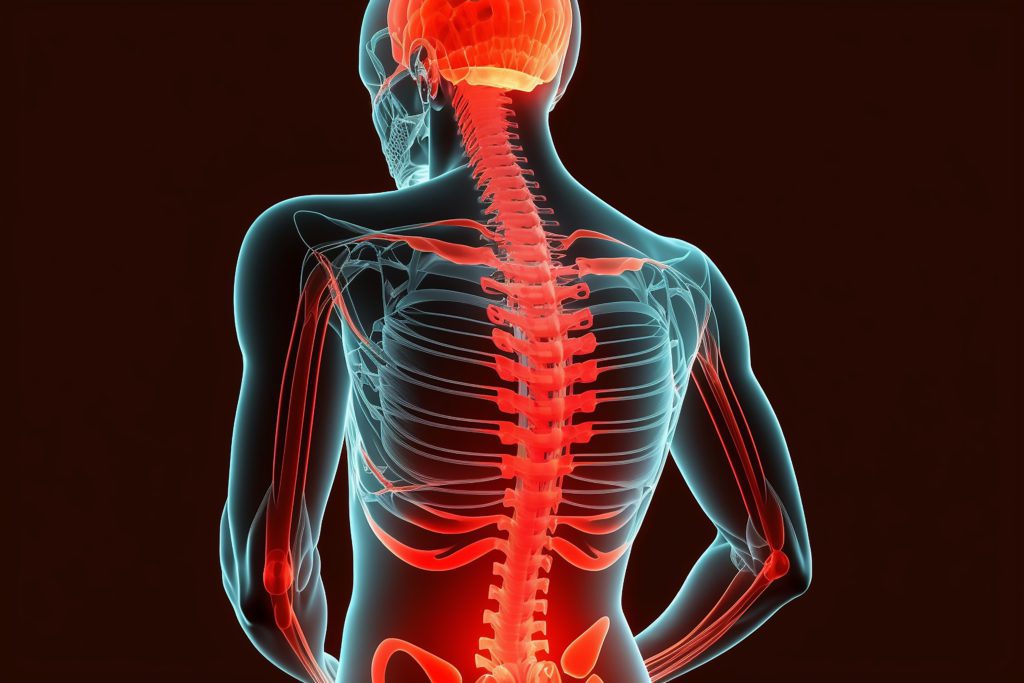Exercises & Chiropractic Care for Muscle Pain Management
Find out how chiropractic care exercises can be a solution for muscle pain and help you regain flexibility and comfort.
Harnessing Chiropractic Care and Exercise to Combat Muscle Pain: A Holistic Approach with Dr. Alexander Jimenez in El Paso, TX
Muscle pain is like that one friend who shows up uninvited and overstays their welcome. Whether it’s a dull ache from hours hunched over a laptop or a sharp sting from trying to channel your inner Olympian at the gym, musculoskeletal pain can throw a wrench in your daily routine. Fortunately, combining chiropractic care with dynamic exercises like CrossFit and weight training offers a powerful, non-surgical way to alleviate pain and restore your body’s natural function. In El Paso, Texas, Dr. Alexander Jimenez, DC, APRN, FNP-BC, is the go-to expert for tackling pain, especially for personal injury victims. His integrative approach, blending chiropractic expertise with advanced diagnostics and a dash of functional medicine, is helping people move better and feel better. This blog dives deep into why this combo works, how it addresses the root causes of pain, and what small changes you can make to keep pain at bay—all with a sprinkle of humor to keep it light. Let’s get started!
Understanding Musculoskeletal Pain: Why Your Body’s Throwing a Tantrum
Your musculoskeletal system—made up of bones, muscles, tendons, ligaments, and joints—is like the scaffolding of a house. It holds you up, lets you move, and occasionally groans under pressure. When it’s out of whack, you get musculoskeletal pain, which can feel like anything from a mild nuisance to a full-on rebellion. Common culprits include:
- Poor Posture: Slouching at your desk like you’re auditioning for a role as a question mark.
- Repetitive Strain: Typing, lifting, or swinging a hammer like you’re Thor, but without the godly recovery powers.
- Injuries: From car accidents to that time you thought you could “just jump” that fence.
- Environmental Factors: Sedentary lifestyles, inadequate ergonomics (think chairs that feel like medieval torture devices), or even stress that tightens your muscles like a coiled spring.
Dr. Alexander Jimenez, a chiropractor and board-certified Family Nurse Practitioner in El Paso, explains that pain often stems from biomechanical dysfunctions—like misaligned joints or imbalanced muscles—amplified by lifestyle choices such as poor nutrition or lack of exercise (ChiroMed – Integrated Medicine, n.d.). For instance, sitting for hours can shorten hip flexors, pulling on your lower back, while repetitive motions can overwork tendons, leading to conditions like tendonitis. A study on isometric exercises showed they reduce low back pain by strengthening stabilizing muscles, supporting Dr. Jimenez’s holistic approach (Alayat et al., 2015).
References
- ChiroMed – Integrated Medicine. (n.d.). ChiroMed – Integrated Medicine Holistic Healthcare in El Paso, TX. Retrieved from https://chiromed.com/
- Alayat, M. S., Mohamed, A. A., & El Fiky, A. A. (2015). The Effects of Isometric Exercise Types on Pain and Muscle Activity in Patients with Low Back Pain. Journal of Physical Therapy Science, 27(8), 2507-2511. https://pubmed.ncbi.nlm.nih.gov/26311960/
Chiropractic Care: Your Spine’s Personal Cheerleader
Chiropractic care is like giving your spine a motivational speech. It focuses on aligning the spine and joints to restore proper function, easing pressure on nerves and muscles. Dr. Jimenez uses techniques like spinal manipulation—gentle, controlled thrusts to correct misalignments—to reduce pain and boost mobility. It’s like hitting the reset button on your body’s motherboard. A systematic review found that direct access to physical therapy, including chiropractic care, is cost-effective and improves outcomes for musculoskeletal disorders compared to seeing a physician first (Ojha et al., 2021). Translation: you get relief faster without draining your wallet.
But chiropractic care isn’t just about cracking backs (though the satisfying pop is a bonus). Dr. Jimenez integrates non-surgical treatments, such as spinal decompression, which gently stretches the spine to relieve disc pressure, and manual therapies to loosen tight muscles (ChiroMed – Integrated Medicine, n.d.). For personal injury victims—like those nursing whiplash from a fender-bender—his approach is a game-changer. He utilizes advanced imaging techniques, such as X-rays and MRIs, to identify hidden injuries like ligament tears or disc herniations that may be missed during standard exams (Jimenez, 2024). This precision ensures treatment targets the real problem, not just the symptoms.
References
- Ojha, H. A., Fritz, J. M., & Maletsky, K. (2021). Cost-effectiveness and outcomes of direct access to physical therapy for musculoskeletal disorders compared to physician-first access in the United States: Systematic review and meta-analysis. Physical Therapy, 101(2), pzaa201. https://pubmed.ncbi.nlm.nih.gov/33336765/
- ChiroMed – Integrated Medicine. (n.d.). ChiroMed – Integrated Medicine Holistic Healthcare in El Paso, TX. Retrieved from https://chiromed.com/
- Jimenez, A. (2024). El Paso Chiropractor | Injury Medical & Chiropractic Clinic. Injury Medical & Chiropractic Clinic.
CrossFit and Weight Training: The Muscle-Building Superheroes
If chiropractic care is the calm, wise mentor, CrossFit and weight training are the energetic coaches yelling, “You got this!” These exercise modalities build strength, stabilize joints, and improve flexibility, all of which help banish pain. According to Muscle and Strength, CrossFit’s high-intensity, varied workouts target multiple muscle groups, while weight training focuses on specific muscles for strength and endurance (Muscle and Strength, n.d.). Together, they’re like peanut butter and jelly for your musculoskeletal system—different but better together.
CrossFit: The Full-Body Party
CrossFit is like a fitness rave where every muscle gets an invite. Its high-intensity workouts combine strength, cardio, and flexibility in short, intense bursts called Workouts of the Day (WODs). These include exercises like:
- Squats: Engage quadriceps, hamstrings, and glutes, stabilizing knees and reducing lower body pain.
- Deadlifts: Strengthen the posterior chain (lower back, glutes, hamstrings), supporting spinal health.
- Kettlebell Swings: Target core and hip muscles, improving posture and reducing back strain.
- Pull-Ups: Work shoulders, upper back, and lats, easing tension from desk-bound postures.
A study on neuromuscular electrical stimulation found that isometric exercises, similar to some CrossFit movements, enhance blood flow and reduce inflammation, aiding muscle recovery (Maffiuletti et al., 2014). Dr. Jimenez incorporates CrossFit-inspired exercises into his rehabilitation plans, tailoring them to prevent re-injury while boosting functional strength (Jimenez, 2023a). For example, a WOD might involve an AMRAP (as many rounds as possible) of squats, push-ups, and burpees, building endurance and strength in one go.
Weight Training: The Sculptor’s Chisel
Weight training is the precision artist of fitness, targeting specific muscles to build strength and stability. Exercises like:
- Bicep Curls: Strengthen arm muscles, reducing strain from repetitive tasks.
- Bench Press: Targets chest, shoulders, and triceps, improving upper body stability.
- Leg Press: Bolsters quads, hamstrings, and glutes, supporting knee and hip joints.
- Deadlifts: Fortify lower back and core, complementing chiropractic adjustments.
Research shows that a single bout of weight training can reduce fatigue and boost energy, indirectly easing chronic pain (Herring et al., 2013). Dr. Jimenez’s “PUSH-as-Rx” system integrates these exercises to enhance mobility, ensuring patients move better with less pain (Jimenez, 2023a). Unlike CrossFit’s fast-paced WODs, weight training allows for longer rest periods, enabling you to focus on form and progressive overload—gradually increasing weight to build muscle.
References
- Muscle and Strength. (n.d.). CrossFit vs. Weight Training: Which is Better? Retrieved from https://www.muscleandstrength.com/workouts/crossfit-vs-weight-training
- Maffiuletti, N. A., Green, D. A., & Vaz, M. A. (2014). Time course of central and peripheral alterations after isometric neuromuscular electrical stimulation-induced muscle damage. European Journal of Applied Physiology, 114(9), 1865-1873. https://pubmed.ncbi.nlm.nih.gov/24917356/
- Herring, M. P., O’Connor, P. J., & Dishman, R. K. (2013). The effect of a single bout of exercise on energy and fatigue states: A systematic review and meta-analysis. Fatigue: Biomedicine, Health & Behavior, 1(4), 223-242. https://www.tandfonline.com/doi/abs/10.1080/21641846.2013.843266
- Jimenez, A. (2023a). El Paso Chiropractor | Injury Medical & Chiropractic Clinic. Injury Medical & Chiropractic Clinic.
The Science of Motion- Video
The Musculoskeletal System: Your Body’s Framework
Think of your musculoskeletal system as the scaffolding of a construction site—it keeps you upright, lets you move, and occasionally creaks under pressure. It includes bones for structure, muscles for power, tendons and ligaments for connection, and joints for flexibility. When this system becomes out of balance—such as from a car accident, poor posture, or attempting to lift a couch alone—it can lead to pain, stiffness, or limited mobility.
Dr. Jimenez notes that pain often results from overlapping risk factors, such as misaligned joints, inflammation, or lifestyle habits like prolonged sitting or poor diet (Jimenez, 2025). For example, tight hip flexors from sitting can pull on your lower back, while repetitive motions can strain tendons. Chiropractic care corrects these misalignments, while CrossFit and weight training strengthen supporting muscles, creating a pain-resistant framework. A study on the 6-minute walk test in rheumatoid arthritis patients showed that improved physical function reduces pain and enhances quality of life, supporting this approach (Wan et al., 2020).
References
- Jimenez, A. (2025). Dr. Alexander Jimenez, DC, APRN, FNP-BC, IFMCP, CFMP, ATN. LinkedIn. Retrieved from https://www.linkedin.com/in/dralexjimenez/
- Wan, S. W., Hebert, J. J., & Thomas, J. S. (2020). Clinical Associations and Prognostic Implications of the 6-Minute Walk Test in Rheumatoid Arthritis. Arthritis Care & Research, 72(8), 1056-1063. https://pubmed.ncbi.nlm.nih.gov/31309740/
Dr. Alexander Jimenez: El Paso’s Personal Injury MVP
In El Paso, Dr. Jimenez is the superhero of personal injury care. Whether you’ve been rear-ended in traffic or slipped on a wet floor, his dual expertise as a chiropractor and nurse practitioner makes him a one-stop shop for recovery. He uses advanced imaging—like X-rays and MRIs—to detect subtle injuries, such as microtears or nerve compression, that might be overlooked (Jimenez, 2024). His dual-scope procedures combine chiropractic adjustments with medical evaluations, like motion palpation to assess joint mobility or diagnostic tests to confirm disc issues (Jimenez, 2018).
What makes Dr. Jimenez stand out is his role as a medical-legal liaison. He provides detailed reports linking injuries to their causes, which is critical for insurance claims or legal cases. His clinic, Injury Medical & Chiropractic, collaborates with radiologists and specialists to deliver top-notch care (Jimenez, 2023b). For personal injury victims, this means not only physical recovery but also the documentation needed for fair compensation—because nobody wants to fight both pain and paperwork.
References
- Jimenez, A. (2024). El Paso Chiropractor | Injury Medical & Chiropractic Clinic. Injury Medical & Chiropractic Clinic.
- Jimenez, A. (2018). Shoulder Diagnostic Imaging Approach | El Paso, TX. El Paso Back Clinic.
- Jimenez, A. (2023b). Dr. Jimenez Sports Care Enhances Fitness Performance. PushAsRx Athletic Training Centers.
Non-Surgical Treatments: The Dream Team
Dr. Jimenez’s integrative approach is like assembling the Avengers for your health. He combines chiropractic care with non-surgical treatments to tackle pain from all angles:
- Acupuncture: Tiny needles that work like mini-magic wands to reduce inflammation and relax muscles.
- Physical Therapy: Targeted exercises, such as those in CrossFit or weight training, are used to restore strength and mobility.
- Nutrition Counseling: Personalized diets to fight inflammation and support muscle repair—like swapping chips for salmon.
- Naturopathy: Natural remedies to boost overall wellness, because your body deserves some love.
These treatments address overlapping risk factors, like inflammation or poor mobility. For example, a study on backward walking found it reduces pain and improves function in knee osteoarthritis, complementing chiropractic care (Alghadir et al., 2019). Dr. Jimenez’s team at ChiroMed tailors these therapies to each patient, ensuring a holistic recovery (ChiroMed – Integrated Medicine, n.d.).
References
- Alghadir, A. H., Anwer, S., & Alotaibi, M. (2019). Effect of 6-week retro or forward walking program on pain, functional disability, quadriceps muscle strength, and performance in individuals with knee osteoarthritis: A randomized controlled trial (retro-walking trial). BMC Musculoskeletal Disorders, 20(1), 159. https://pubmed.ncbi.nlm.nih.gov/31029168/
- ChiroMed – Integrated Medicine. (n.d.). ChiroMed – Integrated Medicine Holistic Healthcare in El Paso, TX. Retrieved from https://chiromed.com/
Small Changes, Big Wins: Dr. Jimenez’s Practical Tips
You don’t need to become a fitness guru or live at the chiropractor’s office to reduce pain. Dr. Jimenez suggests small, manageable changes to keep your body happy:
- Posture Power: Stand tall, as if you’re posing for a superhero movie. Use a standing desk or set a timer to stretch every hour.
- Mini Workouts: Try 5-minute CrossFit-style circuits—think squats, push-ups, and jumping jacks—to keep muscles active.
- Eat Smart: Add anti-inflammatory foods like turmeric or berries. Dr. Jimenez’s nutrition counseling can help you plan.
- Sleep Right: Get a supportive mattress. Your old one might be conspiring against your spine.
These tweaks, rooted in Dr. Jimenez’s integrative approach, can help prevent pain from returning. A study on sedentary adults found that simple strategies, such as setting activity goals, increase physical activity and reduce the risk of pain (Mansfield et al., 2016).
References
- Mansfield, L., Hall, J., & Smith, L. (2016). When Adults Don’t Exercise: Behavioral Strategies to Increase Physical Activity in Sedentary Middle-Aged and Older Adults. Innovation in Aging, 1(1), igx007. https://pubmed.ncbi.nlm.nih.gov/30480102/
The Science of Synergy: Why It Works
The magic of combining chiropractic care with CrossFit and weight training lies in their teamwork. Chiropractic adjustments fix joint misalignments, reducing nerve irritation, while exercises strengthen the muscles that support those joints. The Timed Up and Go test shows that improved strength and mobility enhance overall health, reducing pain (Herman et al., 2019). Dr. Jimenez’s dual-scope approach amplifies these benefits by addressing biomechanical and systemic factors, ensuring lasting relief. CrossFit’s high-intensity, functional movements and weight training’s targeted strength gains create a robust, pain-resistant body (Muscle and Strength, n.d.).
References
- Herman, T., Giladi, N., & Hausdorff, J. M. (2019). Timed Up and Go (TUG) test: Normative reference values for ages 20 to 59 years and relationships with physical and mental health risk factors. Journal of Primary Care & Community Health, 10, 2150132719881656. https://pubmed.ncbi.nlm.nih.gov/31646947/
- Muscle and Strength. (n.d.). CrossFit vs. Weight Training: Which is Better? Retrieved from https://www.muscleandstrength.com/workouts/crossfit-vs-weight-training
Conclusion: A Serious Path to Pain-Free Living
Let’s drop the humor for a moment. Muscle pain can disrupt your life, but with the right approach, you can take control. Dr. Alexander Jimenez and his team at ChiroMed – Integrated Medicine in El Paso offer a comprehensive solution, combining chiropractic care, CrossFit, weight training, and non-surgical treatments to address the root causes of pain. His expertise in personal injury cases, supported by advanced diagnostics and legal documentation, ensures victims recover physically and secure fair compensation. By adopting small, evidence-based changes, you can prevent pain and live an active life. Consult Dr. Jimenez to start your journey to a pain-free life.
Disclaimer: This blog is for informational purposes only and is not a substitute for professional medical advice. Always consult a qualified healthcare provider, like Dr. Jimenez, for personalized treatment plans. The information aligns with evidence-based protocols; however, it should be verified by a professional for your specific condition.
References
- ChiroMed – Integrated Medicine. (n.d.). ChiroMed – Integrated Medicine Holistic Healthcare in El Paso, TX. Retrieved from https://chiromed.com/
- Jimenez, A. (2025). Dr. Alexander Jimenez, DC, APRN, FNP-BC, IFMCP, CFMP, ATN. LinkedIn. Retrieved from https://www.linkedin.com/in/dralexjimenez/
- Jimenez, A. (2024). El Paso Chiropractor | Injury Medical & Chiropractic Clinic. Injury Medical & Chiropractic Clinic.
- Jimenez, A. (2023a). El Paso Chiropractor | Injury Medical & Chiropractic Clinic. Injury Medical & Chiropractic Clinic.
- Jimenez, A. (2023b). Dr. Jimenez Sports Care Enhances Fitness Performance. PushAsRx Athletic Training Centers.
- Jimenez, A. (2018). Shoulder Diagnostic Imaging Approach | El Paso, TX. El Paso Back Clinic.
- Ojha, H. A., Fritz, J. M., & Maletsky, K. (2021). Cost-effectiveness and outcomes of direct access to physical therapy for musculoskeletal disorders compared to physician-first access in the United States: Systematic review and meta-analysis. Physical Therapy, 101(2), pzaa201. https://pubmed.ncbi.nlm.nih.gov/33336765/
- Maffiuletti, N. A., Green, D. A., & Vaz, M. A. (2014). Time course of central and peripheral alterations after isometric neuromuscular electrical stimulation-induced muscle damage. European Journal of Applied Physiology, 114(9), 1865-1873. https://pubmed.ncbi.nlm.nih.gov/24917356/
- Herring, M. P., O’Connor, P. J., & Dishman, R. K. (2013). The effect of a single bout of exercise on energy and fatigue states: A systematic review and meta-analysis. Fatigue: Biomedicine, Health & Behavior, 1(4), 223-242. https://www.tandfonline.com/doi/abs/10.1080/21641846.2013.843266
- Alayat, M. S., Mohamed, A. A., & El Fiky, A. A. (2015). The Effects of Isometric Exercise Types on Pain and Muscle Activity in Patients with Low Back Pain. Journal of Physical Therapy Science, 27(8), 2507-2511. https://pubmed.ncbi.nlm.nih.gov/26311960/
- Alghadir, A. H., Anwer, S., & Alotaibi, M. (2019). Effect of 6-week retro or forward walking program on pain, functional disability, quadriceps muscle strength, and performance in individuals with knee osteoarthritis: A randomized controlled trial (retro-walking trial). BMC Musculoskeletal Disorders, 20(1), 159. https://pubmed.ncbi.nlm.nih.gov/31029168/
- Mansfield, L., Hall, J., & Smith, L. (2016). When Adults Don’t Exercise: Behavioral Strategies to Increase Physical Activity in Sedentary Middle-Aged and Older Adults. Innovation in Aging, 1(1), igx007. https://pubmed.ncbi.nlm.nih.gov/30480102/
- Wan, S. W., Hebert, J. J., & Thomas, J. S. (2020). Clinical Associations and Prognostic Implications of the 6-Minute Walk Test in Rheumatoid Arthritis. Arthritis Care & Research, 72(8), 1056-1063. https://pubmed.ncbi.nlm.nih.gov/31309740/
- Herman, T., Giladi, N., & Hausdorff, J. M. (2019). Timed Up and Go (TUG) test: Normative reference values for ages 20 to 59 years and relationships with physical and mental health risk factors. Journal of Primary Care & Community Health, 10, 2150132719881656. https://pubmed.ncbi.nlm.nih.gov/31646947/

